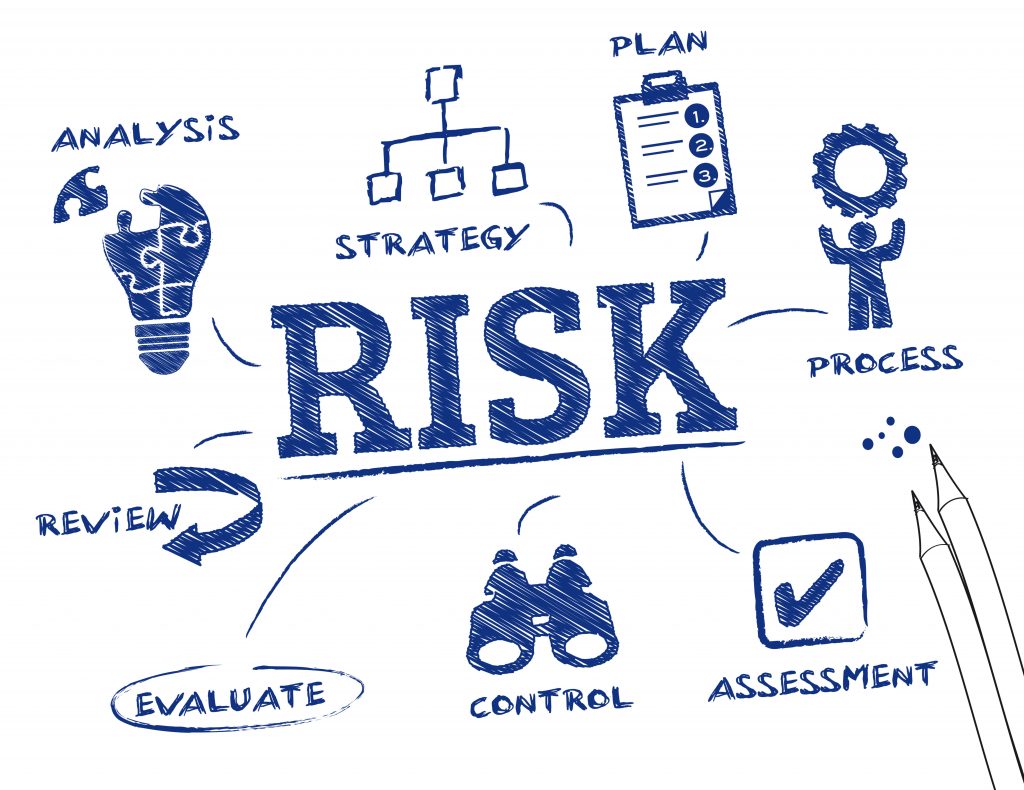The Importance of Continuous Risk Assessment
If you somehow had access to some sort of futuristic x-ray machine that when held up to a business reveals all the inner workings of that business, what you’ll likely find is that most of the activity is not directly related to the core of the business. This is especially true of big companies with a big presence and a sizeable market share, but the same applies to small operations that have identified some areas in which they need to expand. The further away your daily business operations are from the core specialty of the
This is especially true of big companies with a big presence and a sizeable market share, but the same applies to small operations that have identified some areas in which they need to expand. The further away your daily business operations are from the core specialty of the business, however, the greater the risk associated with business becomes and this is because you continuously have to rely on some input from outside sources of sorts.
Take a telecommunications business, just as an example. If the core of the business is providing telecommunications services, whether they manufacture the units used for the infrastructure or not, the core of the business i.e. engineers, technicians, etc., are usually vastly outnumbered by supporting staff, such as admin personnel, people in sales, call centre agents, etc. Since the company’s management will naturally be extensively knowledgeable about the core of the business, this core is where the least of the risk lies, while the supporting roles and positions.
Similarly, a warehouse or factory environment can harbor a multitude of risks, making continuous risk assessment essential to ensure the safety of workers and the protection of assets. These facilities often involve heavy machinery and equipment, making puwer risk assessment in the UK (or wherever the business is based) a top priority. These assessments address potential hazards related to machinery operation, including mechanical failures, electrical malfunctions, and operator errors. In addition to machinery risks, warehouses and factories can be susceptible to fire hazards due to the presence of flammable materials.
In any case, since the company’s management will naturally be extensively knowledgeable about the core of the business, this core is where the least of the risk lies, while the supporting roles and positions form the most amount of risk associated with the business. Once business owners understand this, they’ll also understand the importance of the need for continuous risk assessment because this is what ultimately affects the bottom line.
Physical Risk
On more of a physical level, continuous risk assessment is required to keep costs such as insurance premiums in check. Oftentimes premiums on business insurance are unnecessarily inflated by an area of risk that doesn’t form part of the core business. Weak security in the reception area, for instance, could quite easily be assessed as poor security all-round, when in actual fact there’s nothing of value which could be stolen out of the reception area.
The idea of safety also factors in heavily when talking about risk assessment for businesses that deal in dangerous materials such as firearms. Gun ranges or shooting arenas need a special kind of insurance from qualified underwriters (check out this insurance underwriting company to learn more) who can thoroughly assess the risk and decide premiums accordingly. Here continuous risk assessment is required to maintain the utmost standard of physical safety of employees and customers both.
Technological Risk
The relentless march of technology brings both opportunities and threats and staying ahead of potential disruptions is paramount. One of the critical aspects of technological risk management is adapting to evolving cybersecurity threats. The rise of remote work and the increasing reliance on cloud-based solutions have expanded the attack surface for cybercriminals. This is where robust measures like hybrid cloud security and Web & API protection come into play. Such measures secure data and resources in the dynamic and evolving cloud environment while minimizing potential security gaps.
Conducting continuous risk assessments can also identify vulnerabilities, proactively address potential security gaps, and ensure the integrity of businesses’ data in an environment where technology is in a constant state of flux. Embracing a culture of continuous risk assessment is not merely a choice but an imperative for companies striving to navigate the ever-changing technological landscape and safeguard their digital assets.
Business Risk
In terms of the business itself, no matter how good your core product or offering is, it is at the front-office or retail level where things can go bad or go really well. It’s how your product or offering is presented to the customer and how the staff in charge of overseeing that process interact with the customer that ultimately matters, and again, this is indeed where the biggest business risk lies because if for instance you are indeed a telecommunications service provider, your core speciality is not sales.
It isn’t customer relations either and in a world where it makes financial sense for peripheral business operations to be outsourced, a considerable amount of control over such risk factors is inevitably left in the hands of someone else. But that’s why some of the world’s biggest companies like Alphabet (Google) tend to keep the original staff of those companies which they buy and integrate into their company. They want to maintain a level of speciality which is very close to what the original founders created so that the
It isn’t customer relations either and in a world where it makes financial sense for peripheral business operations to be outsourced, a considerable amount of control over such risk factors is inevitably left in the hands of someone else. But that’s why some of the world’s biggest companies like Alphabet (Google) tend to keep the original staff of those companies which they buy and integrate into their company.
They want to maintain a level of speciality which is very close to what the original founders created so that the business risk is better managed at all levels, from the core of the main business to the way in which the final product is received by the customer.







